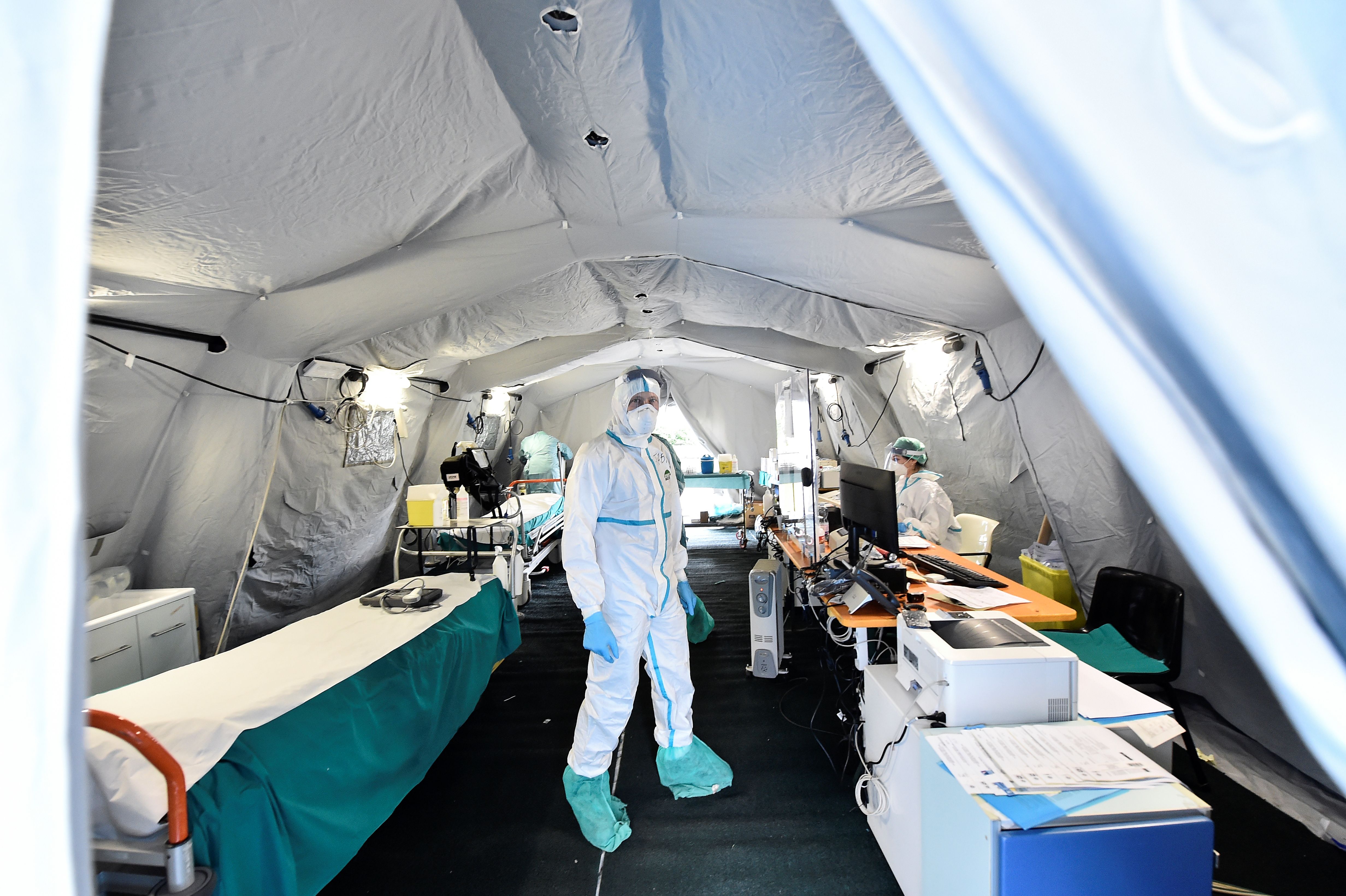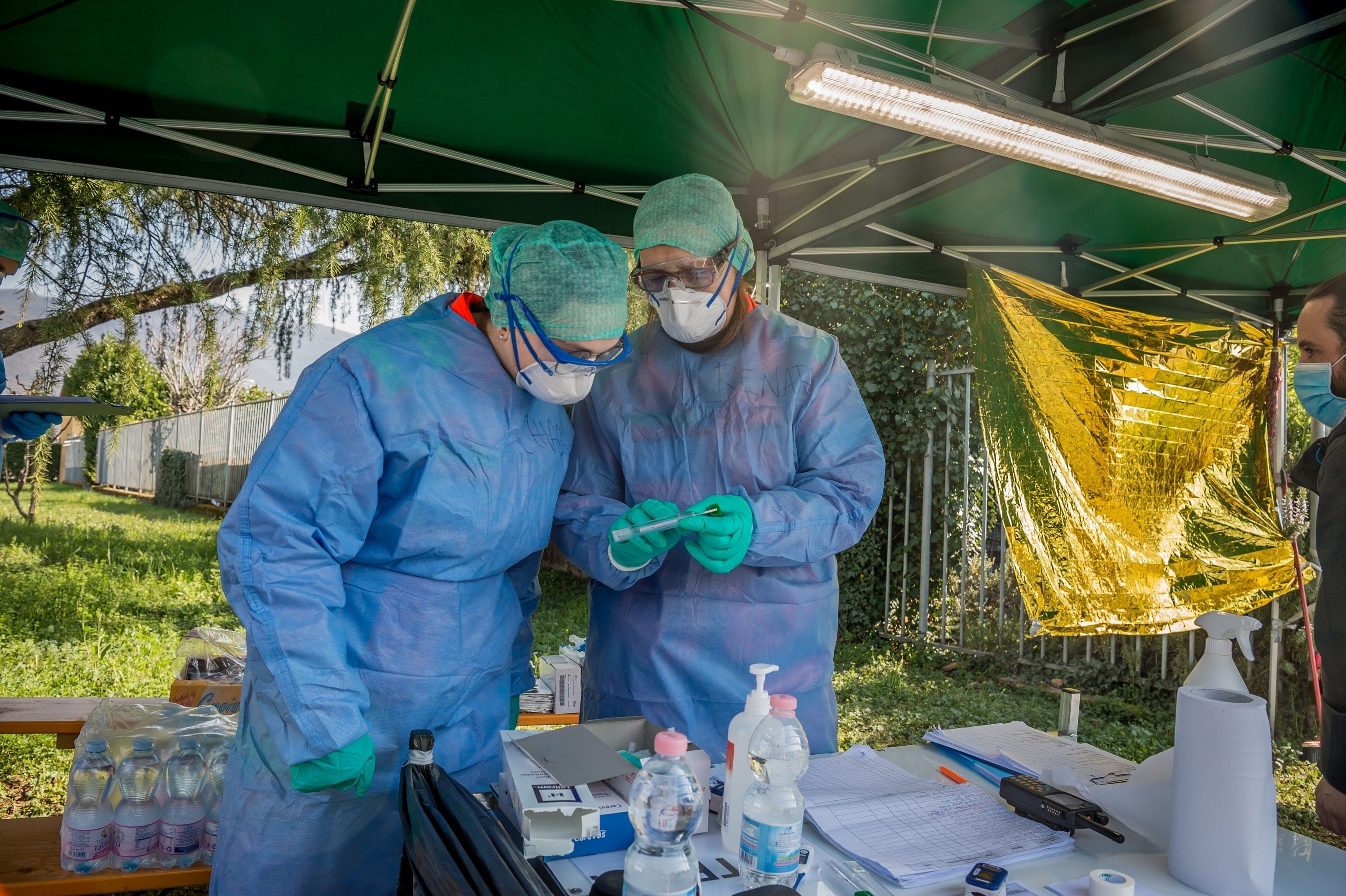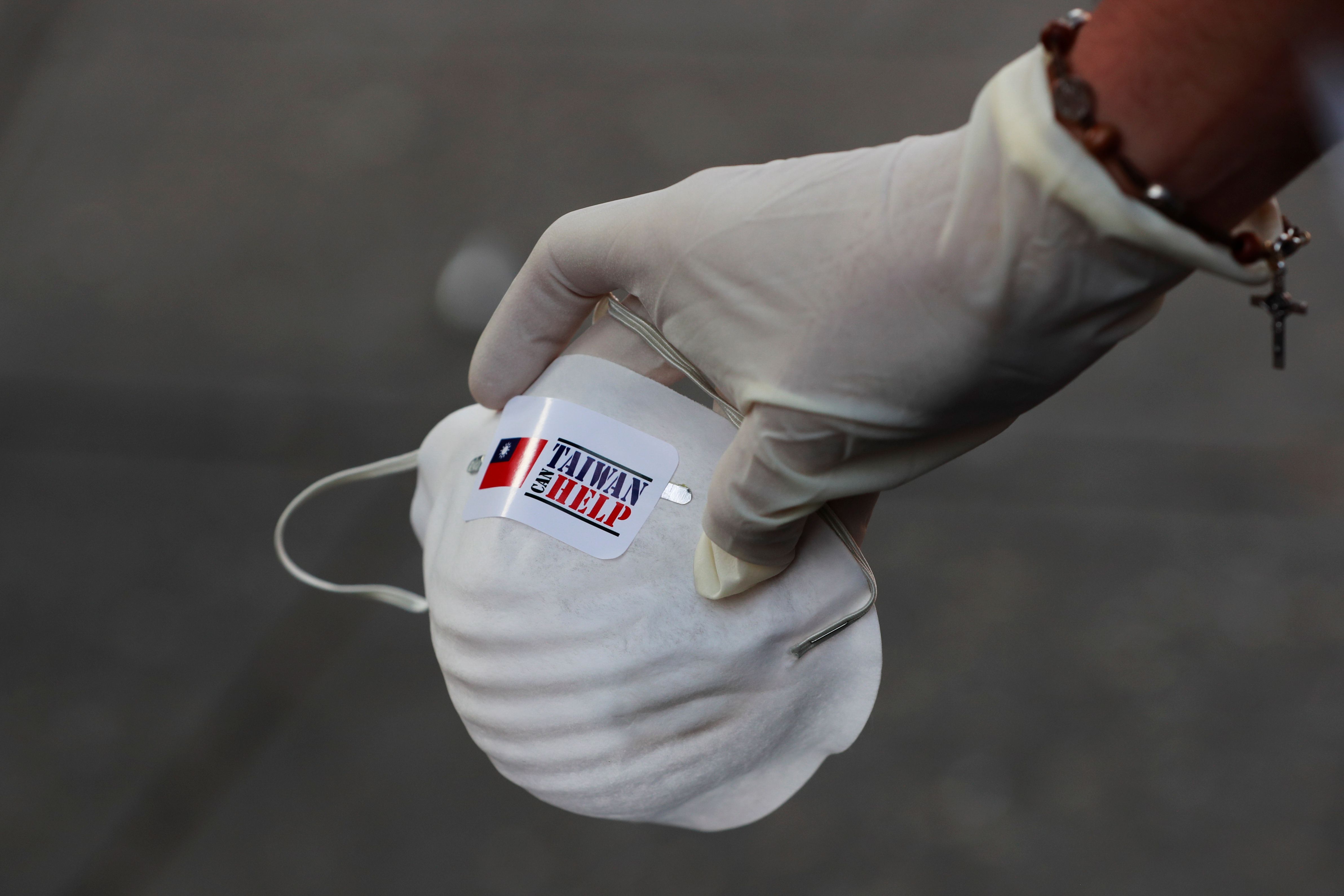The U.S. Fight against Coronavirus

The first case of SARS-CoV-2 infection in the U.S. was recorded on 21 January. A total of 69,197 cases had been reported as of 25 March, with 1,050 people dying of Covid-19, the disease caused by the virus, and 619 believed to have recovered. The epidemic has spread to all 50 states and New York is now an epicentre, with half of all cases detected. The number of infected is growing quickly, with more than 12,000 new cases reported on 25 March alone.
Actions to Fight the Pandemic
U.S. President Donald Trump questioned the threat for months up to even March when he compared SARS-CoV-2 to influenza. He had claimed that the U.S. would not be threatened by its spread. Consequently, his administration did not ensure the availability of tests. The Centers for Disease Control and Prevention (CDC) did not accept the tests recommended by the World Health Organisation and decided to develop its own, which caused delays, further exacerbated when the procedure it developed turned out to be overly complicated.
Regardless of Trump’s approach, federal agencies have gradually picked up the pace of their actions and issued tighter recommendations. At the same time, the federal authorities seemed to expect the states to take most of the actions, while state authorities expected more involvement from the federal government. At the end of January, a task force monitoring the pandemic was established within the administration. Initially, the U.S. banned the entry of foreigners coming from China and then extended the ban to travellers from the EU (including the UK and Ireland after a few days’ exemption), Canada and Mexico. In early March, Congress adopted a bill granting $8.3 billion in funding to government agencies responsible for fighting the pandemic. On 13 March, Trump declared a national emergency in the U.S., releasing $42.6 billion in crisis funding. These funds will reimburse up to 75% of the costs incurred by state and local authorities in the fight against the pandemic, amounting to the bulk of the federal government’s action. After negotiations between the administration and Democrats, on 18 March Congress passed an assistance bill that allowed, among others, three months paid leave for those with a family member who is infected or in quarantine, two weeks paid sick leave, and access to tests for the uninsured. On 22 March, Trump federalised the National Guard in the states most affected by the epidemic—New York, California, and Washington—taking control from the state authorities and financing the increased operations from the federal budget. With the tightening of the administration's approach, the president’s ratings also increased, with 53% of respondents positively assessing Trump’s response to the pandemic and 39% negatively. At the same time, the president’s job approval rating returned to its highest level—49%—in his time in office (first recorded at the end of the impeachment process).
State authorities are also acting, with all of them declaring a state of emergency. The most stringent regulations were adopted by the state of New York, which closed all schools and most workplaces not considered essential, cancelled all assemblies, and recommend residents practice social distancing and stop using public transport. In other states, the authorities have not yet closed workplaces but some have closed schools and public places. To limit large gatherings, the largest sports leagues in the U.S. suspended play or delayed the start of their season.
Impact on the Fall Election
The outbreak of the coronavirus pandemic has affected the course of the election primaries, with the candidates cancelling rallies and meetings with voters. Connecticut, Georgia, Indiana, Louisiana, Kentucky, Maryland, Ohio, Pennsylvania and Rhode Island have changed the date of their primaries. In total, 18 other states or territories have yet to vote, and some of those dates may be changed. If the pandemic continues for months, the parties may change the dates or locations of their election conventions. A change in the general election date—3 November—is unlikely. Due to the constitutional date of the swearing-in of the new Congress and president (3 and 20 January, respectively), the elections would have to take place in mid-December at the latest.
Also, the coronavirus has become the main topic of the campaign. During the Democratic primary debate without a live audience on 15 March, Joe Biden and Bernie Sanders criticized the Trump administration for inadequate action and addressed America’s health and social care system. Even before the introduction of the national emergency, they both proposed actions that the administration should take in the fight against the coronavirus.
Rescuing the Economy
As it became clear that the pandemic had reached the U.S., investors began a massive stock sell-off on 19 February, causing steep falls in stock market indices. The Federal Reserve took drastic action, cutting interest rates twice (to 0-0.25%) and resumed the “quantitative easing” programme on 15 March. These actions, however, only boosted the panic, with U.S. stock indices falling below the point they were on Trump’s inauguration in January 2017. Also, Saudi Arabia started a price war with Russia that led to plummeting oil prices, which has put significant pressure on the U.S. oil industry. These factors and the collapse of economic activity from the restrictions to stem the pandemic in the country and around the world will lead to a recession in the U.S. The first official data will appear in the coming weeks, but it is already possible to observe an overall decrease in, for example, restaurant bookings and retail visits (down by 70%). Forecasts indicate the possibility of a fall in GDP in the second quarter by up to 24% and a dramatic increase in unemployment.
On 25 March, the administration’s negotiations with Congress on the largest stimulus package in world history, worth up to $2 trillion, were finalised, including direct payments to Americans (totalling $500 billion), extending unemployment insurance for four months, bailouts for businesses ($500 billion, including $25 billion for airlines), and $100 billion in support for hospitals. The bill has already been unanimously adopted in the Senate and is awaiting vote in the House of Representatives. The administration could also abolish the duties imposed in the trade war with China on steel and aluminium. Trade barriers have increased the operating costs of American companies. Trump, though, so far is rejecting this action.
Conclusions
The U.S. recession will negatively affect its trading partners, for instance, Mexico and the EU. The ban on entry from Europe and weakened economic activity will exacerbate the negative effects in both Europe and the U.S. Also, the strengthening dollar against other currencies will weaken the competitiveness of American products. These factors will make the post-pandemic economic recovery more difficult despite the stimulus package. The crisis will block the implementation of the “phase-one” deal with China, above all the provision on increased purchases from the U.S. due to reduced demand in the former and the limited supply of products from the latter. It also puts off, for now, a “phase-two” agreement.
Implementation of the stimulus package will increase the national public debt to a record $23 trillion (105% of GDP in 2019). As state revenues fall due to the recession, pressure for budget cuts will increase in subsequent years. This could raise concerns about the possibility of the U.S. maintaining funding for military activity abroad, especially when support for international engagement is falling among both of America’s major political parties.
The pandemic’s effects in the U.S. have disrupted the Democratic primaries and will affect the presidential campaign. The belated action at the federal level and Trump’s disregard for the threat for so long may have lessened his re-election chances. However, the administration’s more decisive steps in mid-March have strengthened the president’s ratings. The main problem now, however, will be the condition of the U.S. economy, which until the pandemic had been a strong pillar of his election campaign—recession may affect his re-election. The facilitation for employees and enterprises in the aid and stimulus packages (when fully adopted) will probably become the new focus of Trump’s campaign. However, their effectiveness will depend on the duration of the pandemic in the U.S.
Also, the administration’s previous action, including the introduction of paid sick leave, breaks with traditional Republicans’ free-market position. The adoption of these kinds of solutions with the support of both parties and the possibility that the U.S. will experience the more severe scenarios of the pandemic could create space for more bold changes in healthcare. Support may grow for Sanders-style healthcare reform that introduces an entirely government-based system. In turn, Republicans will be forced to submit substantive health reform plans.






